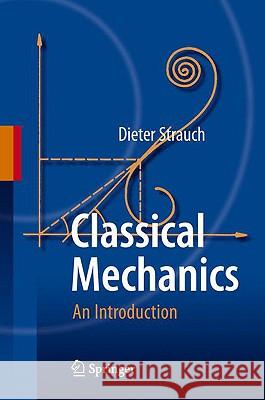Classical Mechanics: An Introduction » książka
Classical Mechanics: An Introduction
ISBN-13: 9783540736158 / Angielski / Twarda / 2009 / 405 str.
Classical Mechanics: An Introduction
ISBN-13: 9783540736158 / Angielski / Twarda / 2009 / 405 str.
(netto: 186,11 VAT: 5%)
Najniższa cena z 30 dni: 192,74 zł
ok. 20 dni roboczych.
Darmowa dostawa!
On this Textbook This book has evolved from the series of lecture notes that I had handed out to the physics students at the University of Regensburg in Bavaria, Germany. Overtheyears, variousbitsandpieceshadbeenaddedtothecontentsofthese lecture notes, and others had to be left out for reasons of time limitations. These notes di?ered from the common textbooks, and as the students seemed to like them, I have collected all those pieces in this book. The Scope of this Book The scope of this book is twofold. The reader can learn that alternative sets of the very few principles of Classical Mechanics carry on very far. Thus, the book contains an amount of applications of varying degrees of sophistication. Also, di?erent physical problems require di?erent methods for their solutions with varying degrees of mathematical sophistication. The Organization of this Book In order not to blur the physics with mathematical intricacies, the necessary mathematical techniques are transferred to appendices. The largest di?erence of this textbook from other books on Classical - chanics may be that I have tried to make a particularly strong separation between axioms and fundamental experiences, on the one hand, and between claims, their proofs, various comments, on the other, rather than telling a more or less continuous story. Also, frequent references are made to other parts of the book or to other physical disciplines. If needed, the reader can skip proofs, comments, applications, and footnotes and thus follow only the main idea











